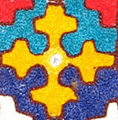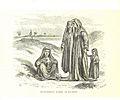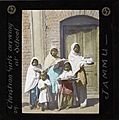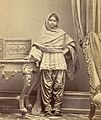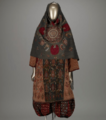Salwar kameez facts for kids
The Salwar kameez is a popular and traditional outfit. People wear it in many parts of Southern Asia. Both women and men wear this comfortable clothing. It's especially common for men in countries like Pakistan and Afghanistan.
The outfit has two main parts: the shalwar and the kameez. The shalwar is a type of loose trousers. They are wide at the top and get narrower towards the ankles. The kameez is a long shirt or tunic. It has special openings on the sides, called chaak. These openings start below the waist. They help people move around easily.
Contents
The Shalwar: Comfortable Trousers
The shalwar (sometimes spelled salwar) is the bottom part of the outfit. It's like a pair of loose pants. These trousers are designed to be very comfortable. They are wide at the hips and thighs. As they go down towards the ankles, they become narrower. This design makes them easy to wear for many activities.
There are different styles of shalwars. Some are very wide all the way down. Others are more fitted around the lower leg. People choose the style they like best.
The Kameez: A Long Shirt
The kameez is the top part of the salwar kameez outfit. It is a long shirt or tunic. The length of the kameez can vary. Some are shorter, reaching the hips. Others are longer, going down to the knees or even further.
A special feature of the kameez is its side seams. These seams are left open below the waist. These open parts are called chaak. The chaak allows the wearer to move freely. This is very helpful for daily activities and work. The kameez can have different necklines and sleeve styles. It often features beautiful embroidery or patterns.
Where is Salwar Kameez Worn?
The salwar kameez is a very common dress in Southern Asia. It is worn in countries like Pakistan, Afghanistan, and parts of India. It is also popular in other nearby regions.
In Pakistan and Afghanistan, it is the most common traditional dress for men. Women also wear it widely in these areas. The style and fabric can change depending on the region. They also change with the weather and local traditions. This outfit is perfect for the warm climates in these parts of the world. It is loose and breathable.
Images for kids
-
Schoolgirls in Abbotabad, Khyber Pakhtunkhwa, Pakistan, in shalwars with cuffed hems, and kameez with western-style collars.
-
Boys in Badakshan, Afghanistan, wearing kameez tunics, showing side seams left open below the waist.
-
Women in the kitchen at Harmandir Sahib, Amritsar, India, displaying the wide-ranging colors and designs of shalwar-kameez
-
Priyanka Chopra modeling an Anarkali suit
-
Afghan children wearing traditional clothes in Kabul
-
Traditional Khet partug (traditional loose Peshawari shalwar)
-
A man from Srinagar wearing phiran
-
Ancient svasthana and varbana outfit worn during the Gupta Empire, the basis of the Punjabi suthan suit
-
Punjab Hills 1895, Kulu woman in churidar suthan, Himachal Pradesh
-
Sindhi girl from Karachi, Sind, in Sindhi cholo and narrow suthan. c. 1870
-
A woman's three-piece combination comprising trousers, tunic, and head-scarf, ca. 1900. Indianapolis Museum of Art.
See also
 In Spanish: Salwar kameez para niños
In Spanish: Salwar kameez para niños

















